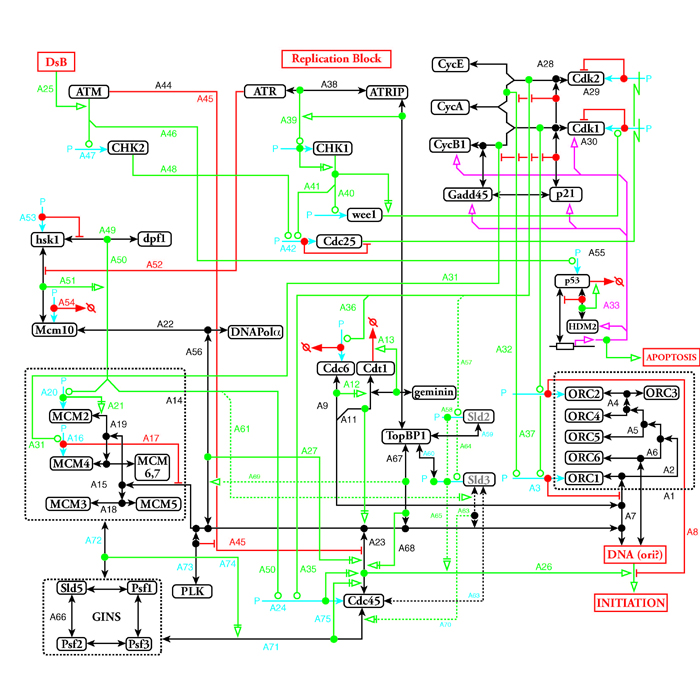|
|
Molecules involved in DNA replication

Molecules involved in DNA replication
Mirit Aladjem, Stephania Pasa, Yves Pommier and Kurt W. Kohn
Implemented by : Margot Sunshine, Hong Cao and David Kane
The molecular interactions involved in DNA replication insure coordinated replication
of the entire genome once and only once per cell cycle.
The molecular pathways involved in replication can be separated into 3 clear
components: licensing, initiation, and regulatory interactions. During licensing,
which occurs in late mitosis and early G1, post-mitotic unreplicated chromatin
binds several protein complexes. Initiation of DNA replication, occurring
throughout S-phase, requires binding of additional factors that recruit the
components of the replication machinery. After replication, the protein complexes
that form the licensing factor leave the DNA, and the DNA is not a substrate for further initiations.
Regulatory interactions occur on licensed or unlicensed chromatin as a response to
environmental conditions that determine whether cells proceed or halt their progression through the cell cycle. These interactions, primarily through modifications of the phosphorylation status of proteins involved in licensing and initiation, determine whether replication will
occur on a specific template during a specific time of the cell cycle.
|